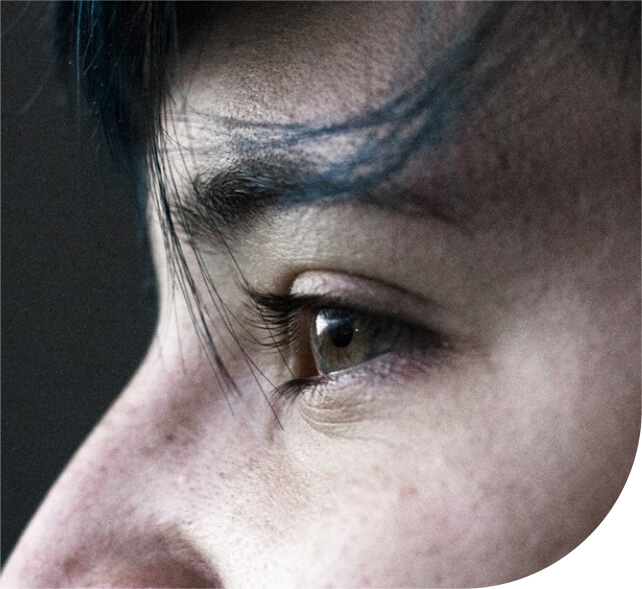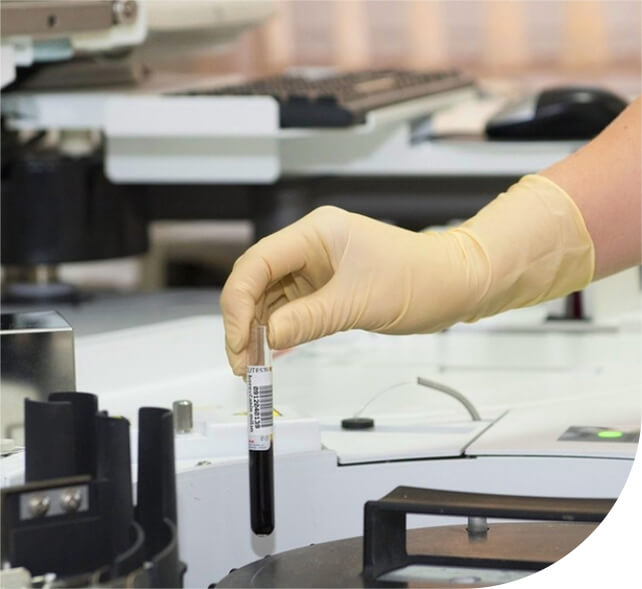Your Eye Concerns
Welcome to the area dedicated to your eye health. Here you can find comprehensive information about diverse eye concerns including symptoms, advice and treatment.

Vision Correction
Few of us are lucky enough to have perfect vision for the whole of our lives but the good news is, whether long- or short-sighted, your vision can be corrected safely and effectively.
Myopia/Shortsightedness
For a shortsighted person, close objects are clear, but distant objects are blurred and difficult to distinguish.
Hyperopia/Longsightedness
A person with long-sightedness or hyperopia will see more clearly in the distance, but close objects or near vision tasks will be more blurry.
Astigmatism
Astigmatism is a common condition which relates to the shape of the eye and will generally result in vision being blurry or distorted.
Presbyopia
Presbyopia is an age related condition where the eye develops difficulty in focussing on close objects or reading. It is a natural, gradual occurrence that starts to affect people around the age of 40.

Eye Infections and Irritations
Infections and irritations are relatively common, some clear up on their own or are easy to treat at home, but some require medical advice.
Dry Eye
Dry eye is a common condition that occurs when your eyes do not make enough tears or the tears evaporate too quickly and can happen due to a variety of factors.
Digital Eye Strain
Digital Eye Strain or what is also known as Computer Vision Syndrome is the physical discomfort felt when using screens and other digital devices such as desktop and laptop computers, tablets, e-readers and mobile phones at close or mid-range distances for prolonged periods of time.
Conjunctivitis
Conjunctivitis is an inflammation of the transparent membrane (or conjunctiva) that lines the eyelids and eye. It is a common condition that is usually minor; however it is uncomfortable and, when caused by an infection, can be highly contagious.
Contact Lens Discomfort
Soft contact lenses are generally comfortable from the beginning of use . Contact lens discomfort can occur but is usually easily remedied. A visit to your eye care practitioner will rule out the possibility that your discomfort indicates a more serious underlying problem.
Allergies
Allergies are your body’s natural response to certain medications or substances, usually resulting in itchiness, redness, and inflammation, among other symptoms.
Eyelid Inflammation
Eyelid inflammation, or blepharitis, is a common disorder in which the eyelids become red, inflamed, and accumulate build-up around their edges.
Foreign Objects / Eye Irritants
A foreign object in your eye could be a piece of dust, grit or something larger—and more serious.
Infected Tear Duct
Also called dacryocystitis, is an inflammation of the tear drainage system in one or both eyes that cause excessive tearing, and sometimes redness and discharge despite there being no presence of allergies, cold, or other concerns.
Styes
A stye is a very common infection of the eyelid that is rarely serious, although it is typically painful. Styes are swellings caused by bacteria that gradually grow in the root of an eyelash.
Tired Eyes
Tired eye is another term for what is commonly known as eyestrain – when eyes feel achy, weak, or heavy due to intense use.
Watery Eyes
Watery eyes happen when eyes produce a surplus of tears, or in other words, when eyes make more tears than they can efficiently drain. This may be due to overproduction of tears, a complication with drainage, or both.


Eye Diseases and Disorders
Many eye diseases begin with minor symptoms, if any, but they can develop over time to cause more problems.
Cataracts
Cataracts are a natural result of ageing. The eye’s natural crystalline lens helps us focus on people and things at varying distances. As we grow older, this lens gradually changes to become less transparent which leads to cloudy or misty vision.
Age-related Macular Degeneration
Age-related macular degeneration, or AMD, is a condition that affects the center of the retina, called the macula. The macula is the part of the eye responsible for our most acute vision, which we use when reading, driving, and performing other activities that require fine, sharp, or straight-ahead vision.
Eye Floaters and Eye Flashes
Eye floaters are tiny spots, specks, lines or shapes that enter into your field of vision, appearing to float in front of the eye. Floaters are often isolated occurrences that are a perfectly normal part of vision.
Retinal Detachment
Retinal detachment occurs when the retina becomes separated from the nerve tissues and blood supply underneath it. While painless, visually this has a clouding effect that has been likened to a grey curtain moving across the field of vision.
Bulging Eyes
Bulging eyes, or proptosis, occurs when one or both eyes protrude from the eye sockets due to space taking lesions such as swelling of the muscles, fat, and tissue behind the eye.
CMV Retinitis
CMV Retinitis is a serious infection of the retina that often affects people with weakened immune disorders.
Colour Vision Deficiency
Colour vision deficiency (sometimes referred to as ‘colour blindness’) is a disorder where people are more likely to confuse some colours whilst retaining the ability to distinguish others.
Crossed eyes (Strabismus)
Crossed eyes (or strabismus) occur when a person’s eyes are not able to align on the same point at the same time, and appear to be misaligned or pointed in different directions.
Eyelid Twitching
Sometimes your eyelid simply twitches. It is rarely uncomfortable – but it can be irritating.
Glaucoma
Glaucoma occurs when a build-up of fluid creates pressure in the eye, which then damages the optic nerve.
Keratoconus
Keratoconus is a condition in which the normally dome shaped cornea, the clear window at the front of the eye, becomes progressively thinner, more cone-shaped and bulging.
Lazy Eye
Amblyopia, commonly known as lazy eye, occurs when there is a lack of vision in one eye because the eye and the brain are not working together.
Low Vision
Low vision is a form of vision impairment that involves irreversible vision loss. Low vision is significantly reduced vision but not blindness.
Uveitis
The uvea is a vascular, fibrous layer that protects the eye, and is critical to nutrition and gas exchange. It consists of three parts: the iris, ciliary body, and the choroid. When any part of the uvea becomes inflamed, it is called uveitis.
Meibomian Gland Dysfunction (MGD)
MGD is a condition where the glands within the eyelids (Meibomian glands) become blocked or abnormal, and therefore can’t secrete enough oil (meibum) that is required for a healthy tear film. It can therefore result in ‘dry eye’ symptoms.

Eye Injuries
Eye injuries can occur in a range of situations. In most cases it is advisable to seek medical attention.
Chemical Eye Burns
Chemical eye burns occur when the eye comes into contact with a solid, liquid, or vaporous chemical. The severity of the burn depends on the chemical, as well as the amount that comes into contact with the eye.
Eye Trauma
Eye trauma refers to damage caused by an impact to the eye. The trauma may only affect the eyeball or it could also include the area around the eye, including the skin and bone structure.
Foreign Objects / Eye Irritants
A foreign object could be a piece of dust, grit, or other substance that comes into contact with the eye. Most of the time, these objects are so small we don’t even notice them or they could be something larger and more serious.


Eye-Related Chronic Conditions
Some chronic conditions that affect the body can also impact our eyes.
Diabetes-related Eye Problems
Having type 1 or type 2 diabetes may put you at risk for a number common diabetes-related eye problems. These include cataracts, glaucoma, macular oedema and diabetic retinopathy (damage to blood vessels that lead to the retina), which may lead to the retina becoming detached.
Ocular Hypertension
Ocular hypertension happens when the pressure inside your eyes becomes higher than it should be. Having ocular hypertension does not hurt, but it increases your risk of developing glaucoma.
Graves’ Ophthalmopathy
In Graves’ ophthalmopathy, the overactive thyroid targets the area surrounding the eyes and may cause inflammation, redness, achiness, pink eye, eyelid retraction and bulging eyes.
Bell’s Palsy
Bell’s palsy is a condition in which one side of the face suffers nerve damage, causing severe weakening or paralysis of facial muscles.
Rheumatoid Arthritis-Related Eye Concerns
Rheumatoid arthritis is an autoimmune disease, which means that your body’s own immune system attacks your healthy cells by mistake. It causes swelling and redness, usually in the joints and tendons but it can also affect other parts of your body, including the eyes.
Sjogren’s Syndrome
Sjogren’s syndrome is an autoimmune disease in which the body’s immune system attacks glands that produce moisture. As it relates to the eyes, Sjogren’s syndrome targets tear glands, causing those who have it to suffer from extremely dry eyes.
These symptoms can also be a sign of other eye conditions. If you have any of the symptoms, please check with your eye care practitioner.

